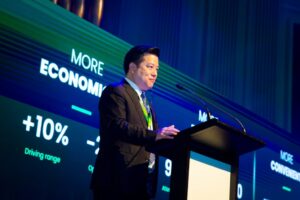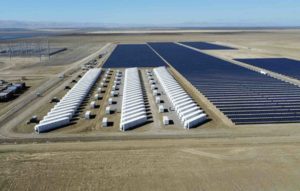At a time when other governments are moving rapidly to support decentralised generation and storage of electricity, the recently released report to the Tasmanian Minister for Energy is an extended argument for slamming on the brakes.
On the other side of Bass Strait, things are moving rapidly. Victoria has introduced an optional time-varying feed-in tariff which rewards customers for feeding energy into the grid at times of highest demand.
South Australia is going to link up to at least 40,000 homes with solar and batteries into a virtual power plant that can provide services to the electricity grid and reduce costs for all consumers. (As a result of this leadership, three different battery manufacturers have announced they will set up manufacturing in South Australia.)
Queensland has just announced the availability of grants of up to $3000 for home batteries. The Federal ALP has announced a policy of subsidies for home batteries for an initial 100,000 homes.
This is not to say that Tasmania should slavishly follow other government initiatives. Our electricity system is different.
We already have ample central energy storage in our dams. Local solar and storage can provide value in specific locations and policy should reflect this.
Where the grid is vulnerable to outages due to long feeder lines and exposure to storms and bushfires, batteries can provide emergency power that keeps lifesaving communications and medical services operational.
Where the network is heavily loaded at peak times co-ordinated use of solar and batteries can avoid blackouts or expensive diesel backup as is being done in TasNetworks’ award-winning Bruny Island project.
In remote locations where long and expensive-to-maintain feeder lines service only a few customers, it may be cheaper to help these customers go off-grid with solar and batteries.
The report acknowledges the need to address access to solar for tenants and low- income households.
Many proven models for addressing this were pointed out to the committee, but the report recommends only that the existing No Interest Loans Scheme (NILS) could be extended and that Housing Tasmania should develop a strategy.
Similarly, the use of more innovative forms of feed-in tariff already exist interstate but the report recommends a further 12 months of investigation. Even when a implement a solution as soon as practical.
A solution involving software in the meter is available and tested but still has not been implemented.
The current report concludes that fixing this problem is “desirable” but makes no recommendation for action.
The minister should reject this report’s do-nothing attitude and set up a group of people (from within and outside the government energy businesses) who have a bias to action and a record of getting things done.
Their priorities should be:
FIX the metering software problem;
Speed up the rollout of smart meters and information services based on them;
Educate people about tariff structures, energy efficiency and smart technology in reducing power bills; and
Implement a program to support installation of solar and batteries where they can solve local reliability and grid constraint problems or reduce network construction and maintenance costs.
The future of electricity supply globally is 100 per cent renewable, distributed and locally controlled.
Tasmania should be at the forefront of developing and marketing these solutions.
Jack Gilding is Executive Officer at the Tasmanian Renewable Energy Alliance. A version of this article first appeared in The Mercury, reproduced here with permission of the author.










